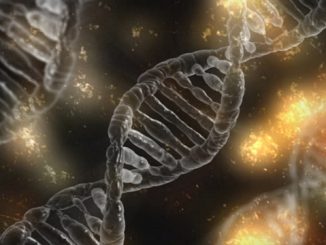
Ten years ago, a Japanese biologist named Shinya Yamanaka was able to pinpoint four specific genes that could revert to the embryonic state and produce stem cells that can turn into any kind of cell in the body and divide indefinitely. Known as the ‘Yamanaka factors’ (which he won a 2012 Nobel Prize for), these stem cells can be made from just about any cell in an adult human body. This is an important aspect of the discovery because it eliminated the need to get stem cells from embryos — a procedure that wasn’t only difficult, but raised ethical issues too.
As groundbreaking as the discovery of the Yamanaka factors was, it was not particularly helpful when it was used on live animals because turning the genes on resulted in cancerous growths which eventually killed the test subjects. But that could have been because the genes were turned on too long.
In a new study published in Cell, a team of scientists at the Salk Institute for Biological Studies tweaked the use of the Yamanaka factors — they devised a way to turn the genes on for short durations only. And they used mice as their test subjects.
First, they tested mice afflicted with progeria — a disease that causes them to age faster and die early. By treating the mice with the antibiotic doxycycline during certain stages of their growth, they were able to turn the Yamanaka factors on and off at will. The results showed that the mice looked younger. They had less curved spine, better organ function, fewer signs of aging compared with the untreated mice, and they lived 30% longer than normal.
And so the researchers moved on to other test subjects. This time, they used their treatment on normal older mice. The effect was an improved capability for healing and regenerating.
Next, they tried their approach on human cells. The results were similar. The cells appeared younger and the signs of aging seem to have been reversed.
In summary, the research suggests that though aging is inevitable, some of the changes that come with it might be reversible. Of course, the mice experiments are just the beginning and there’s a long way to go before human experiments can be conducted. But the markings of success are there. Plus, the objective of the team seems to be a bit more plausible than other anti-aging research enthusiasts.
According to the team’s senior author, Juan Carlos Izpisúa Belmonte, “Aging is something plastic that we can manipulate.” But there are so many factors affecting aging. And at this point, the answer to whether aging happens at the same time throughout a person’s body, or if it happens sporadically as certain cells start to fail at their functions, is still uncertain.
The team’s goal is not to interfere with the aging process so a person can live longer. Instead, they want to find a way to intervene when necessary (they’re calling it reprogramming) so a person can remain healthier longer. Living longer will then be just incidental. With this approach, a person can get treatment and age back a number of years. Then when aging catches up again, he/she can just get another treatment.
Right now, the team is working on developing methods to rejuvenate cells, tissues and organs through chemicals that can be applied externally (through creams) or internally (through injections) instead of the ‘Yamanaka factors’ which can’t be replicated outside a lab.
Disclaimer: This page contains affiliate links. If you choose to make a purchase after clicking a link, we may receive a commission at no additional cost to you. Thank you for your support!



Leave a Reply